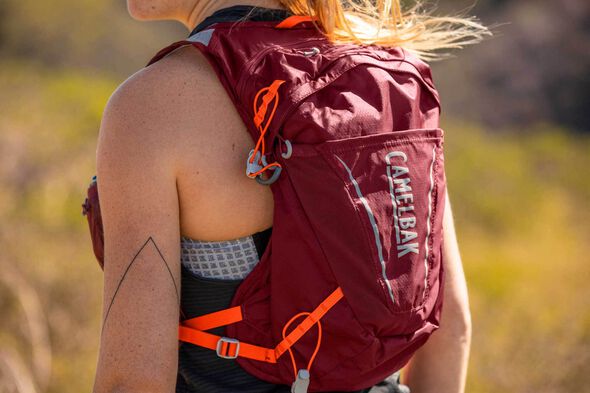How to choose a running hydration pack
Stay hydrated on long runs with a hydration pack

Staying hydrated on a run enhances your speed, strength and endurance, and helps to prevent overheating as well as low body temperature or hypothermia.
There’s plenty of ways to quench your thirst while running including drinking adequate water before exercise; making pit stops at water bubblers during a run; stashing a water bottle along a course; wearing a hydration belt; and even carrying a handheld water bottle. But if you’re planning to run for an hour or more, a running hydration pack could be the answer.
Spot the difference
People tend to use running backpacks and hydration packs interchangeably, but it’s important to note the difference. A hydration pack is a slimmed down, lightweight pack that’s main feature is to provide water to the wearer. Whereas a running backpack has more sleeves and pockets, as well as the ability to fit a water bladder.
The key to choosing which pack is right for you is to determine how you plan to use it. If all you care about is fluid, then a straight up and down hydration pack will work. If you want to carry water as well as other items like gels, food and safety equipment, then a running backpack is a better option. To keep the load as light as possible cap the pack’s weight to no more than 20 per cent of your weight.
Personal choice
Ultra-runner Mak Sawa has been running for more than seven years and, after nine consecutive marathons, signed-up for his first 100km in 2013. So far, he’s competed in 20 100km events. He started using a hydration pack when he registered for his first ultra and began training for four to five hours.
He currently uses both the Ultimate Direction SJ 2.0 and Ultimate Direction PB 3.0.
“I use the SJ 2.0 pack for shorter ultra-distances and longer ones that don’t require a lot of gear,” says Sawa. “With this pack, I typically carry a two-liter bladder in the back and a bottle in the front along with gels, spare batteries for a head torch if running at night, a small first aid kit, some energy bars and a lightweight jacket depending on the weather.
“I use the PB 3.0 pack for events that require mandatory gear such as thermals, waterproof jacket/pants, fleece top, gloves, beanie, Hi-Vis vest, and course maps.”
Try before you buy
While many products are available online, Sawa recommends visiting a running or outdoor store to try before you buy.
“Every pack will fit differently, so it’s best to try a few on to get a feel for them and to learn from the experts how to fit and wear them correctly,” Sawa says. “The positioning of fastening straps, the width of the shoulder straps, the number and position of pockets and the ability to hold bladders and bottles are all things that are important and different for every runner. Some packs have several size options too, which helps cater for smaller or larger body frames.”
Maintain the tempo
Callum Fagg is another convert of running hydration packs. Experienced in orienteering, 24-hour running events, and a lover of trails, Fagg started using a hydration pack when the events he entered required him to carry mandatory gear like first aid kits and thermals. He says hydration packs allow runners to be self-sufficient and help to maintain the tempo.
“I recently made the switch to the new Henty Enduro pack and use it for both running and cycling,” says Fagg. “It has quick access elastic straps for food, the harness has slim line zip pockets that are great for keys, tools, ID, or empty muesli bar wrappers, and it can easily and comfortably handle a 1.5L hydration bladder.”
Additional load
If you’re wondering whether running with a pack will affect your biomechanics, the short answer is maybe.
Research from the school of Physiotherapy and Exercise Science at Curtin University, Perth found that load-bearing increased the angle between the top of the foot and the shin and the rolling in of the hips when running, which could have implications for patella and Achilles tendinopathy.




